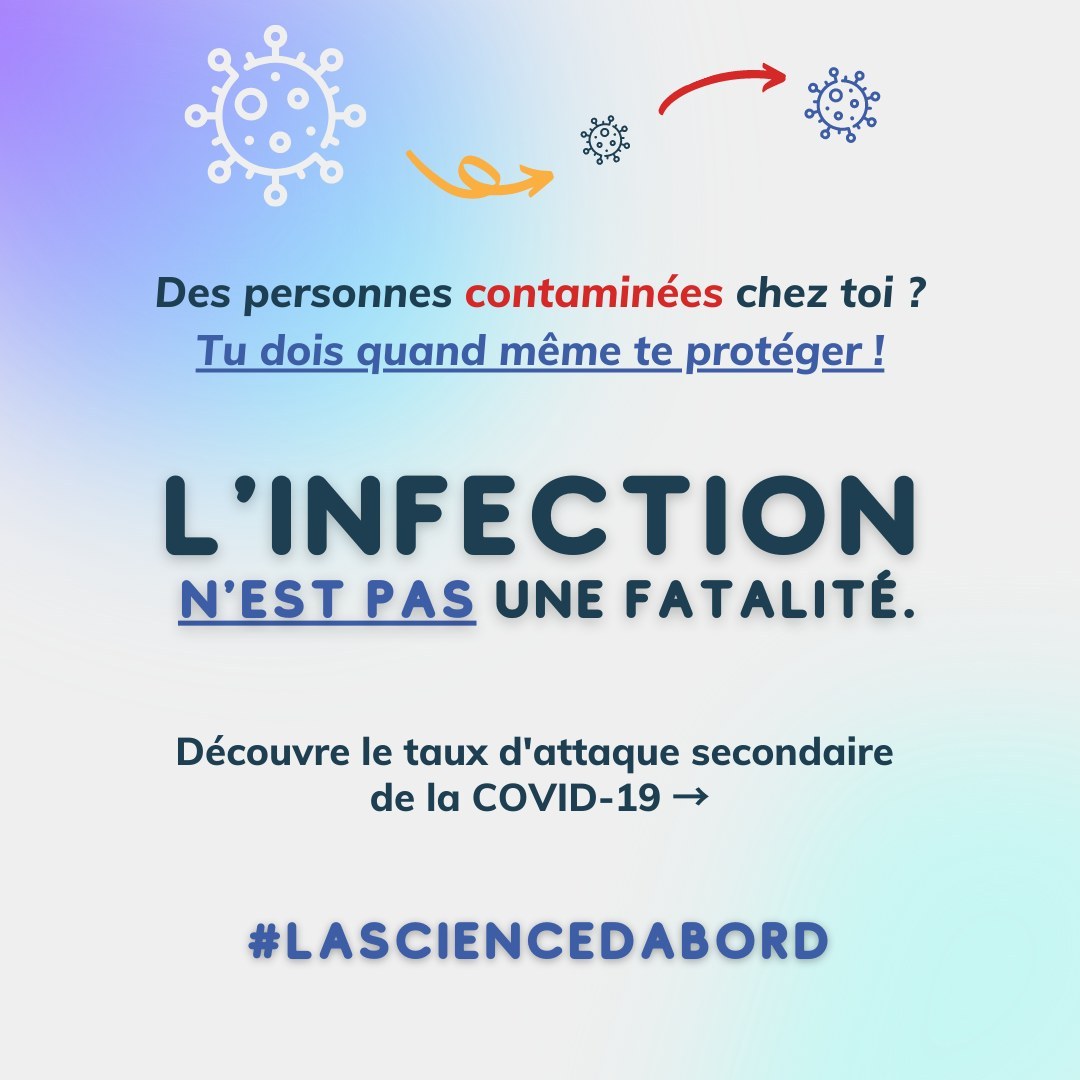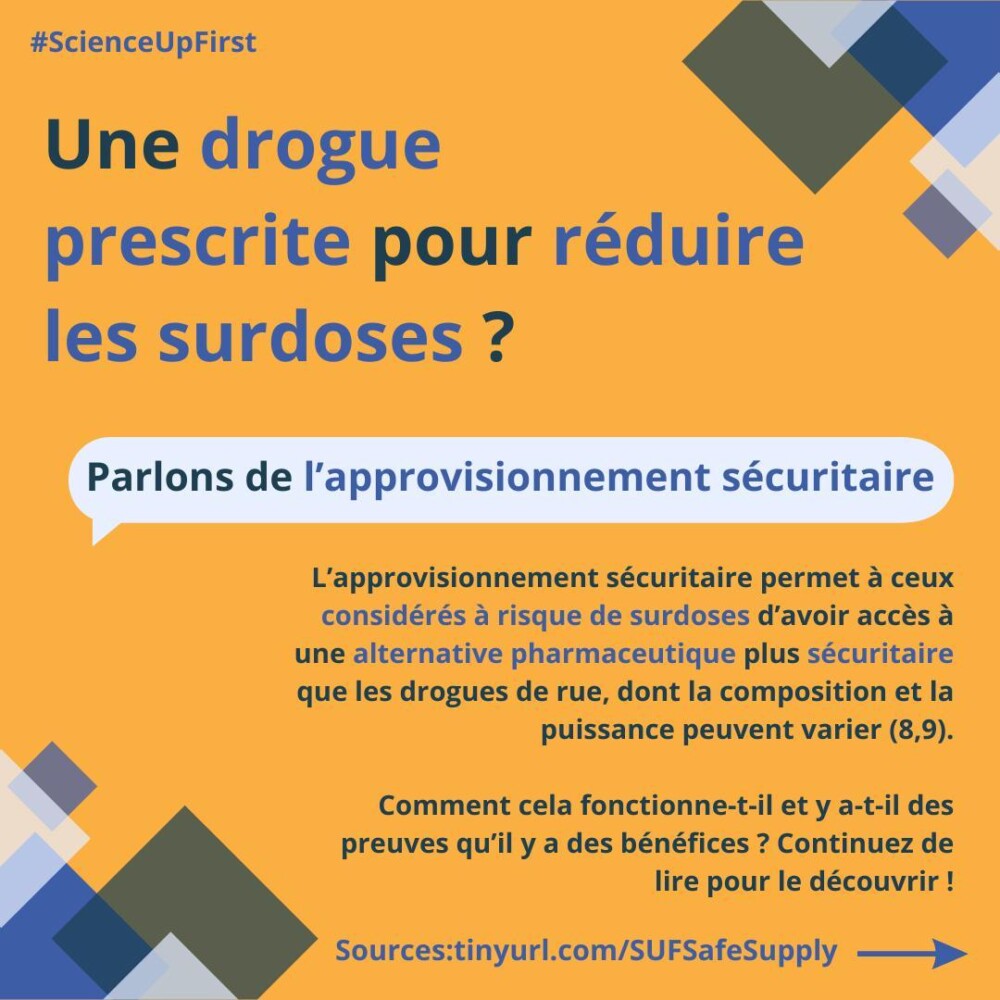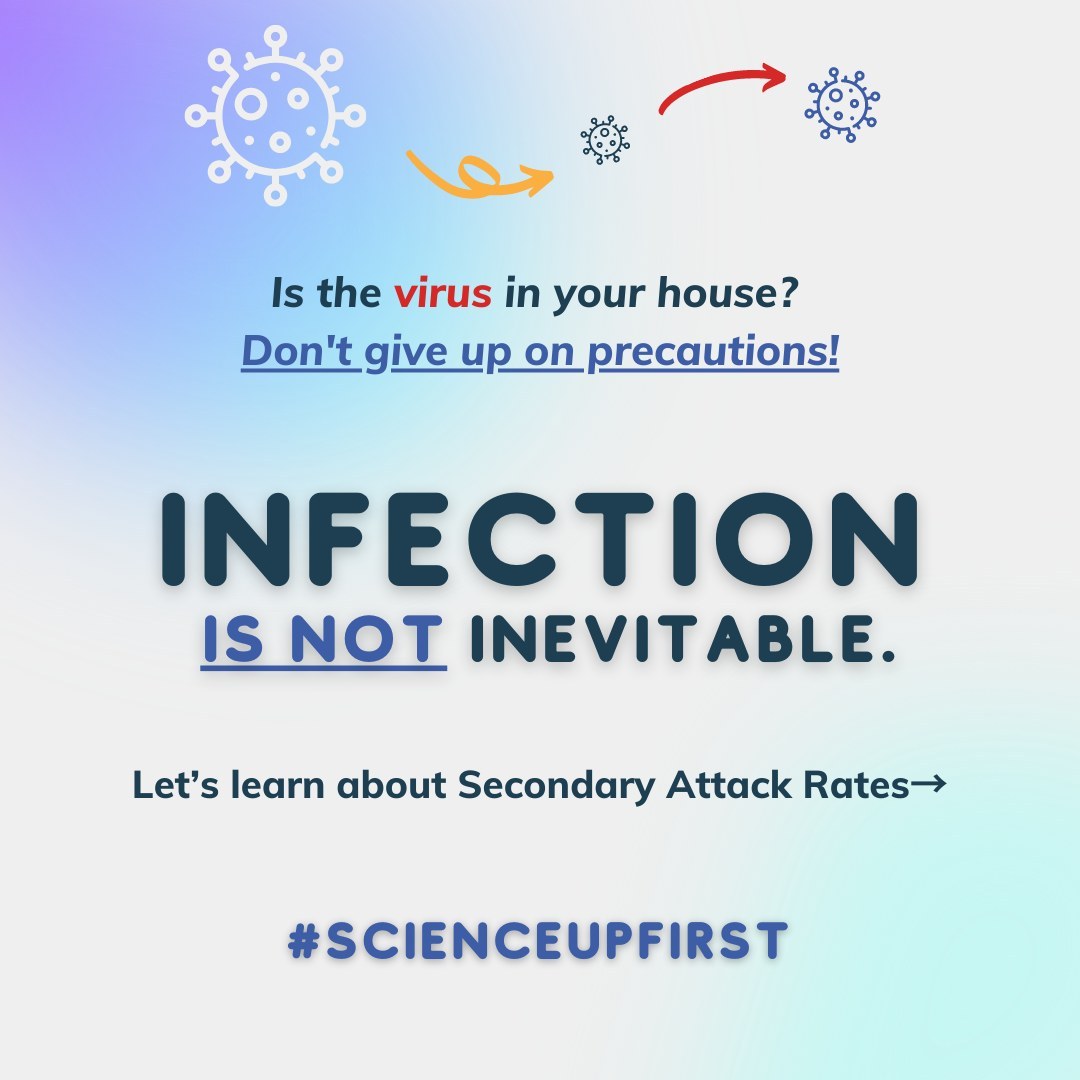


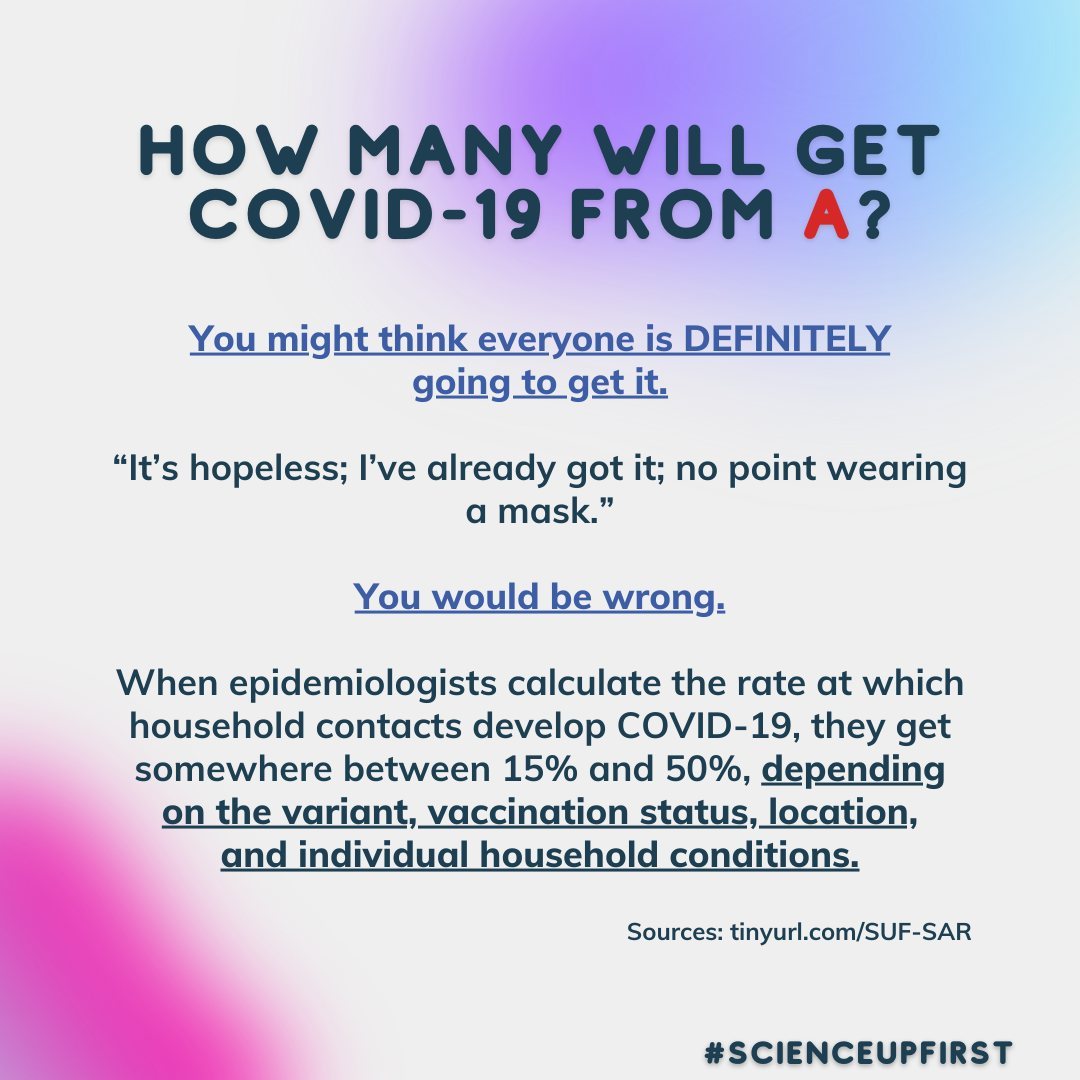
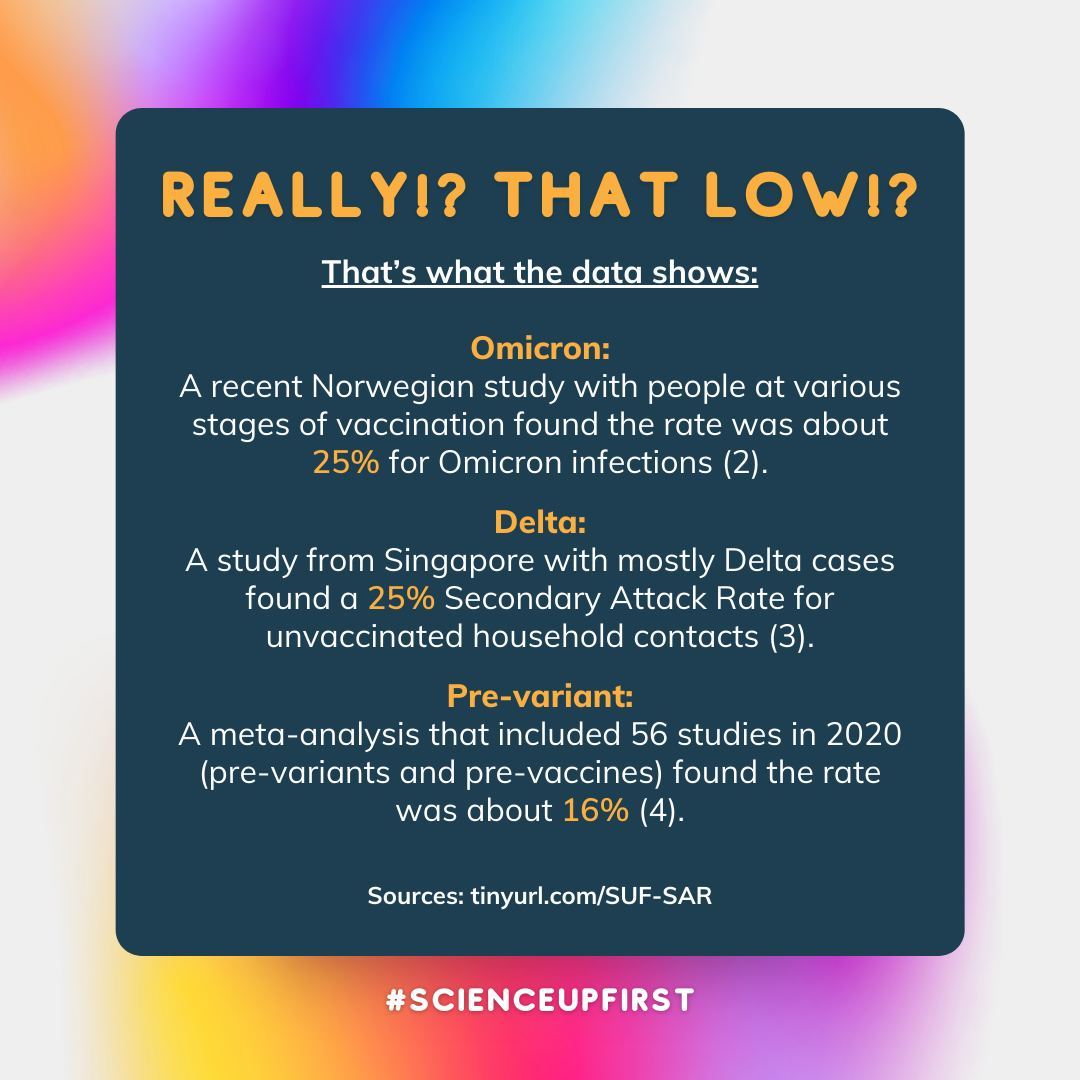
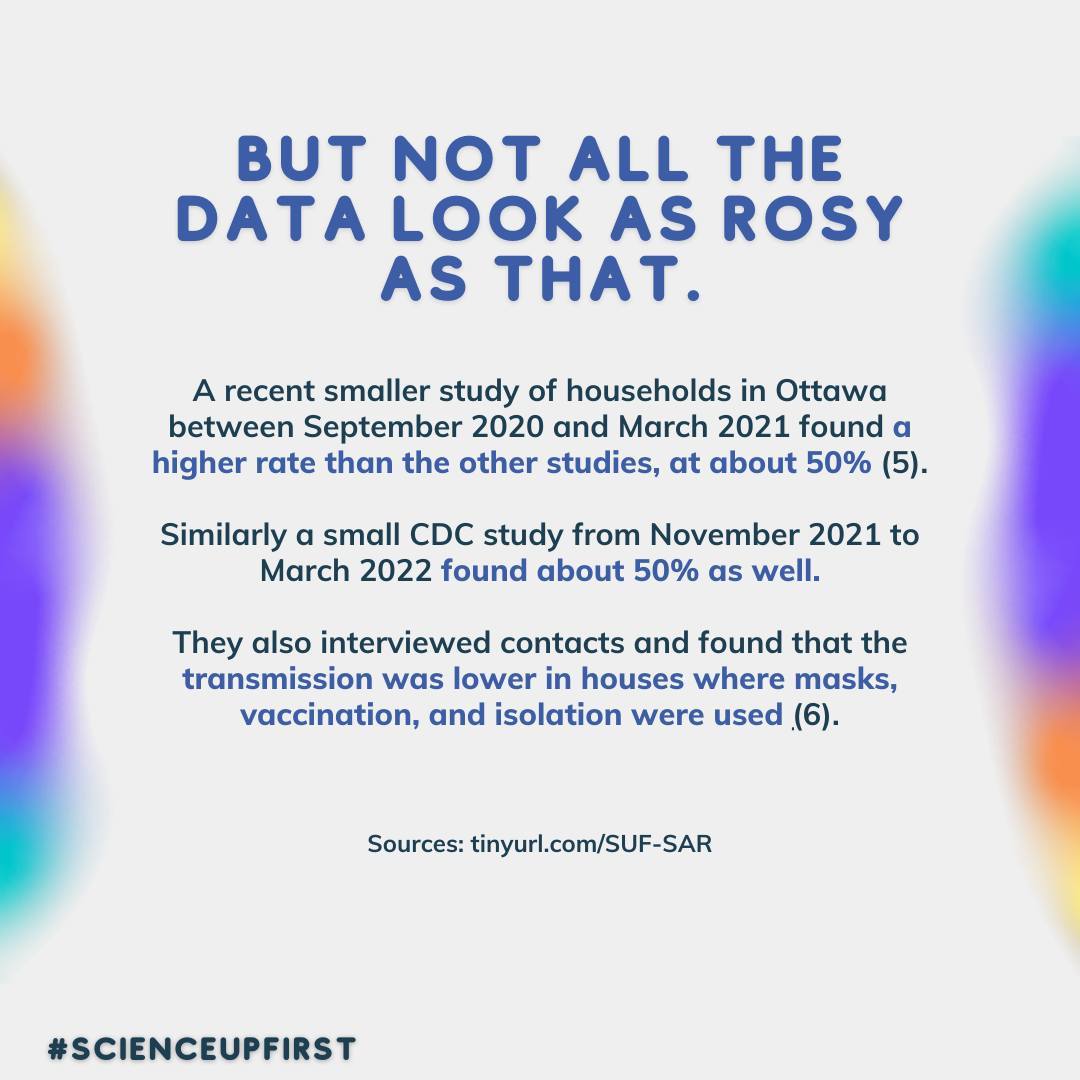
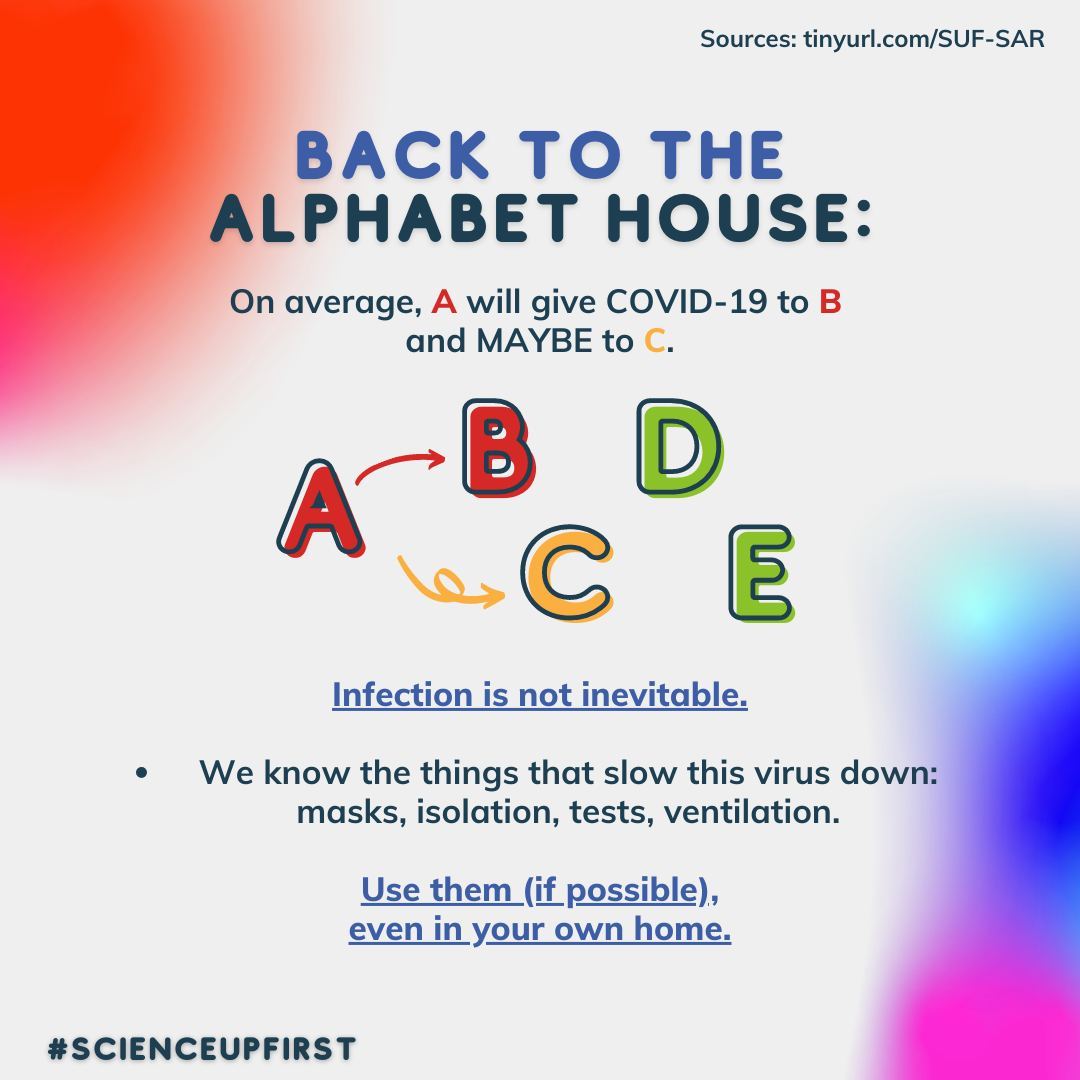
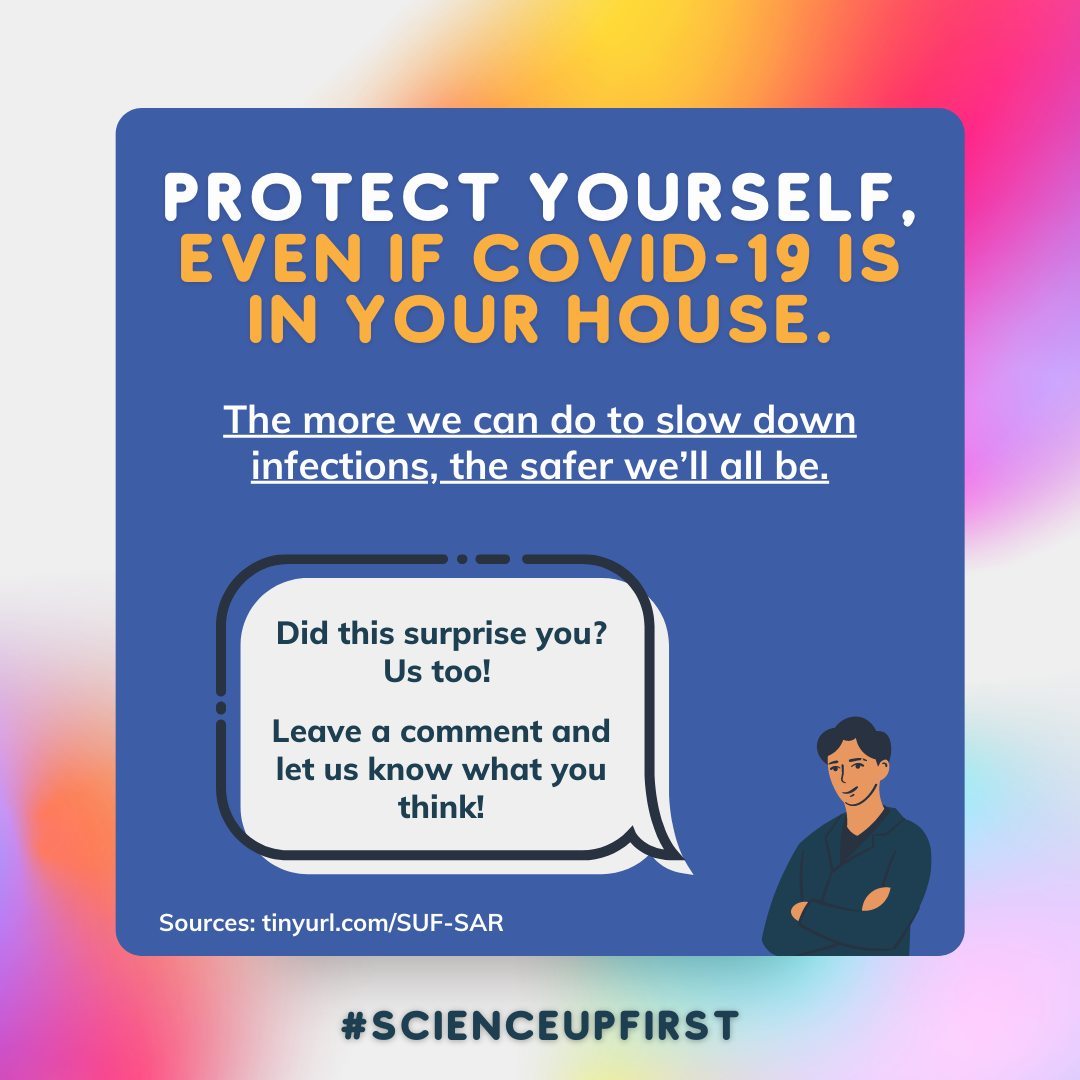
COVID-19 is NOT inevitable, even if it’s already in your house.
Inspired by a question from someone who asked us what they should do if someone in their house got sick, we looked at the data to find an answer.
What we found surprised us. There’s a common view that once one person is infected, everyone else is doomed to get it. But the data doesn’t support that outlook.
Somewhere between 15% and 50% of people in a house go on to develop infections once someone is infected. That’s even with the more infectious Omicron variant.
Interventions like masks, isolation, tests & ventilation make a difference. Of course, it might be more difficult to practice interventions like isolation in some households (e.g. 1 bdrm apartment) than others. But layering protection is worth it!
Share our original Tweet!
Contrary to popular belief, COVID-19 is NOT inevitable, even if it’s already in your house.
If COVID got through the door, don’t give up on precautions.
Let’s learn about Secondary Attack Rates #ScienceUpFirst
1/12 pic.twitter.com/WPQvyUl2hC
— ScienceUpFirst | LaScienced’Abord (@ScienceUpFirst) April 14, 2022
View our original Instagram Post!
View this post on Instagram
- Principles of Epidemiology | Lesson 3 – Section 2
- Secondary Attack Rates for Omicron and Delta Variants of SARS-CoV-2 in Norwegian Households | Infectious Diseases | JAMA
- Impact of Delta Variant and Vaccination on SARS-CoV-2 Secondary Attack Rate Among Household Close Contacts – The Lancet Regional Health – Western Pacific
- Household Transmission of SARS-CoV-2: A Systematic Review and Meta-analysis | Global Health | JAMA Network Open
- Household transmission of SARS-CoV-2 from unvaccinated asymptomatic and symptomatic household members with confirmed SARS-CoV-2 infection: an antibody-surveillance study | CMAJ Open
- SARS-CoV-2 B.1.1.529 (Omicron) Variant Transmission Within Households — Four US Jurisdictions, November 2021–February 2022 | MMWR

